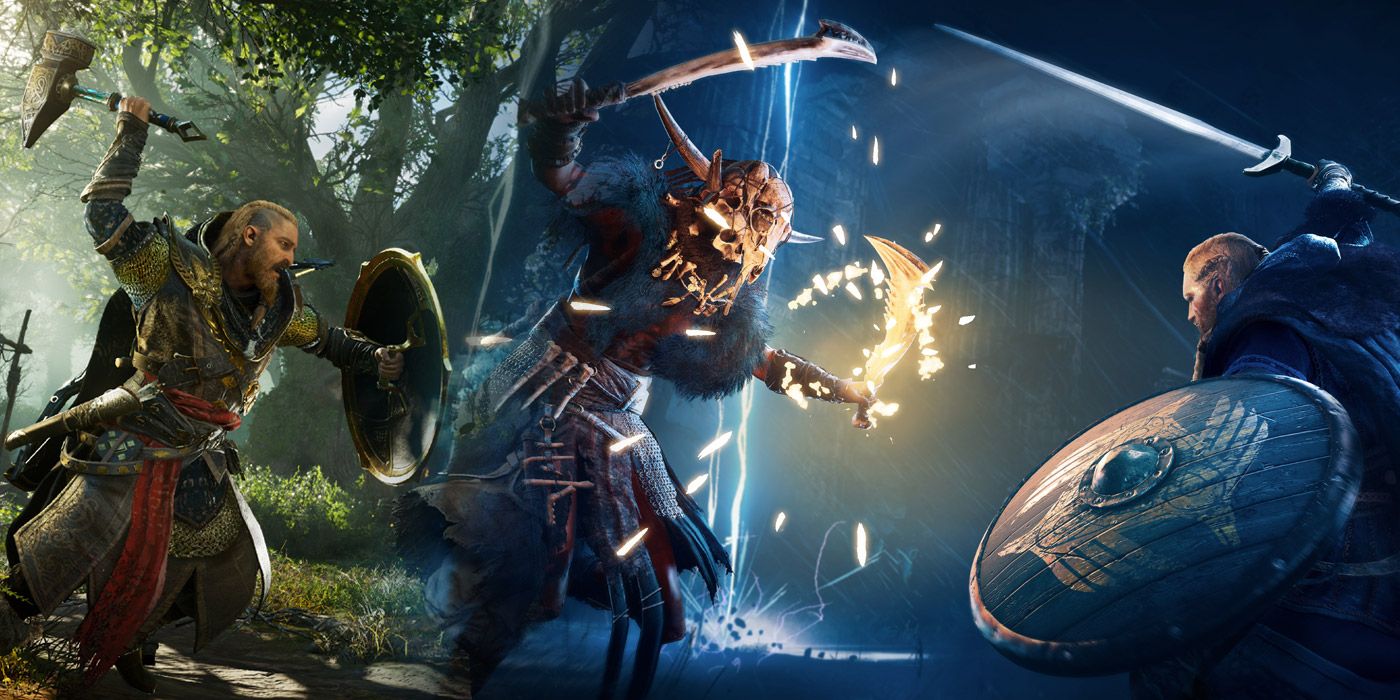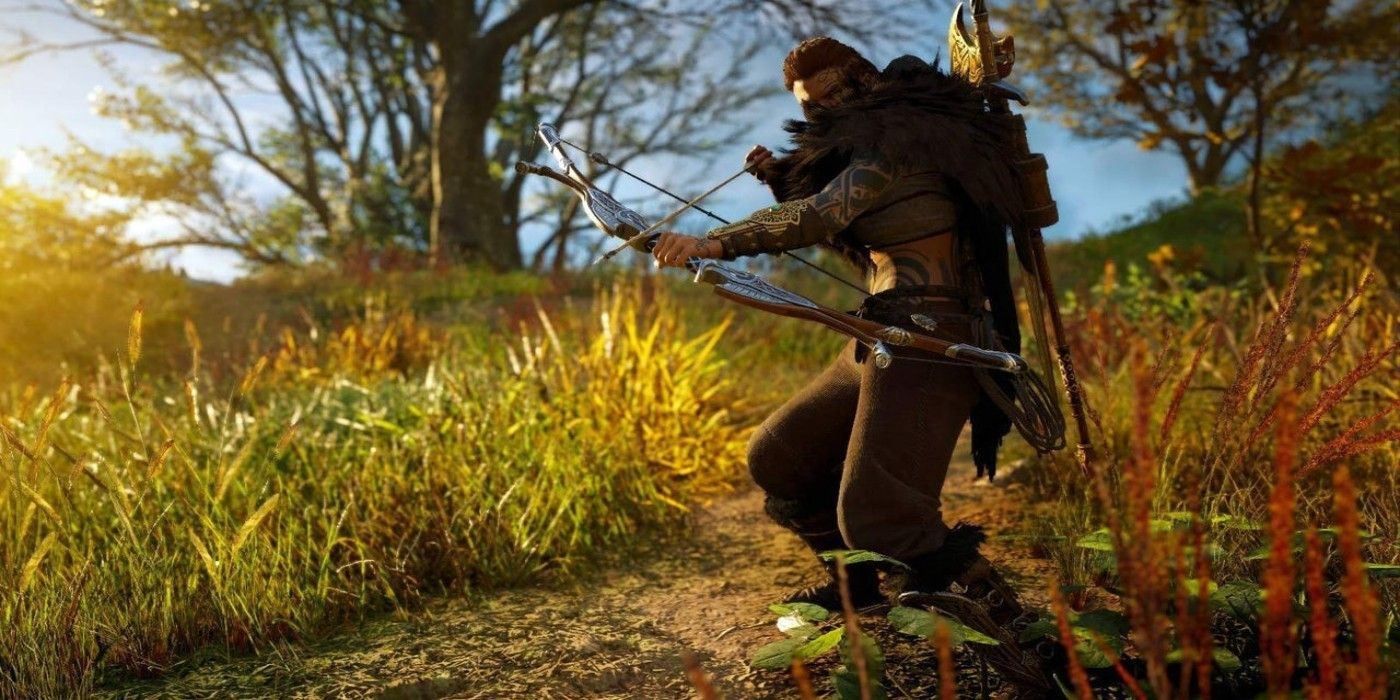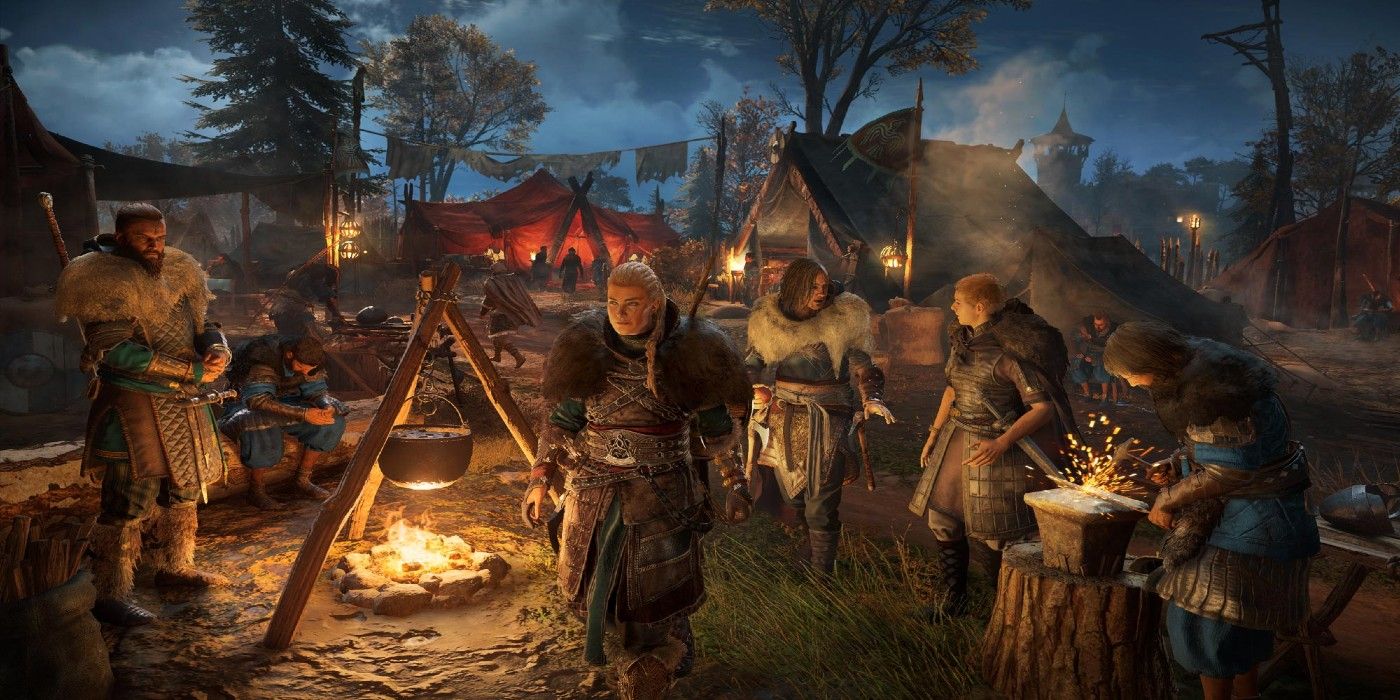
It’s been a few weeks since Assassin’s Creed Valhalla released, which has been plenty of time for many players and critics to form their consensuses on whether they enjoy the game or not. Valhalla stays true to the general Assassin’s Creed formula of placing games in particular historical periods and events, which often puts the player character in contact with bygone cultures and locations. Assassin’s Creed Unity, for example, is set during the French Revolution in the late 1700s, and historians have their own opinions on how faithfully that era was represented.
Assassin’s Creed Valhalla is set in 873 AD, and features the Viking Invasion of Britain. Its name is in reference to the mythic paradise Viking warriors were said to hope to reach in the afterlife, which is fitting, since the player character is a Viking fighter named Eivor. With such a specific setting date, many people familiar with Viking and early British history took a critical look at how the history of Valhalla compares with the historical consensus.
A major issue Viking Age historians have to grapple with is how little of the era is recorded in writing, which means that much of what researchers have to go off of today is based on accounts after the fact. In addition to secondary sources, the combinations of archaeology and DNA analysis have helped provide more of a look into how Vikings like Valhalla‘s Eivor might have lived. Some previously accepted sources are now considered untrustworthy, like early Christian monks’ writings on how vicious Vikings were being biased due to the religious difference. However, academic experts in the field took to the Ask Historians subreddit to provide the background they have about what Ubisoft got right and what it elaborated on or fabricated.
Assassin’s Creed Valhalla features some Roman architecture in good condition still standing in London, like an amphitheater and religious temples and statues. It is possible that the Saxon people in Britain used the old Roman amphitheater for their events, as well as other remnants of Roman rule. In 890, many Roman buildings were repurposed as churches or destroyed, but there is some time before that where London’s residents might have been living alongside Roman ruins.
However, according to one of the historians, the walled Roman city in London was not in use during 873, and the Vikings didn’t visit there except for the winter of 871. Most British people lived in modern-day Westminster instead of in the Roman ruins, so it is odd that the Roman architecture in Valhalla is in such good condition rather than being repurposed or derelict. So in the sections of AC Valhalla set in England, the Roman influence may have been exaggerated.

Some players have noticed how many shots of snowy mountains there are to be seen in Valhalla, and a historian who did their thesis on 13th century environmental history claims that Valhalla‘s portrayal of weather and the climate is totally wrong. Some British landscape shots and settings portrayed in Assassin’s Creed Valhalla were given extra snowy mountaintops, probably to add variety and contrast, but 873 was most likely during the Medieval Warm Period. A low-scale ice age started later in the Middle Ages, nearer to the 1200s, which takes place a lot later than Valhalla does.
The Norwegian climate also doesn’t make sense, with the day-night cycle suggesting an October time frame, meaning that the sailing season would be ending and some in-game events wouldn’t be happening at the right time. It’s also confusing how in-game there’s snow on much of the ground, yet there are also fresh vegetables and fruits. One doesn’t have to be a historian to know that growing vegetables in the snow is only possible with modern greenhouses.
Most likely, the designers were trying to create dramatic shots and icy landscapes to show off the harsh lives of Assassin’s Creed Valhalla Vikings, and historical accuracy wasn’t a key concern.
One Redditor pointed out that the perception of Vikings clad in horned helmets and thick furs has shifted in modern times to often include dreadlocks, face paint, and leather clothing. A historian with a doctorate in Medieval history blames this perception as having originated with heavy metal bands like Manowar, which found popularity in creating the portrayal of a Viking as having raw masculinity and a certain look.
While movements like the Assassin’s Creed Sisterhood have made strides like having their tattoo included in Valhalla, some people have argued that the modern Viking image has been upheld as an excuse for violence and sexism. The historian went on to link the black and death metal scenes as having painted Vikings as glorifying violence and “hyper-masculinity.” The monastic tradition of accusing Vikings as being crude and bloodthirsty also contributed to some people’s perception of Vikings as barbaric people without a rich cultural tradition and history.

A popular question was what underrepresented aspect of Viking culture wasn’t stressed enough in Valhalla or in modern media. A PhD candidate focusing on Viking history immediately answered that Viking women have a rich history that many people ignore, especially when they latch onto the hyper-masculine portrayal of Vikings that was boosted by modern musicians. In Assassin’s Creed Valhalla, players can play as a male or female version of Eivor, which has its own controversy, along with the treatment of female employees by Ubisoft. Viking raids and sailing wouldn’t have happened without women, who would put in thousands of hours to craft sails for the iconic warships.
War and conquest is an important side of history to be studied, but there are other forms of power that are equally important to understanding how a society functions and flourishes. According to this historian, a Viking woman was buried with the house keys and with a sickle when she died, symbolizing her impact on running the household and producing food, partially to feed the warriors everyone hears so much about. Combatting harassment and poor treatment of women in the video games industry is a huge and important topic, and some people were disappointed to see women’s roles pushed to the sidelines in a game about a culture they had an integral part to play in.
Given that Assassin’s Creed Valhalla includes a lot of meta references to other games and franchises, and given the series it’s a part of, its first purpose is to provide entertainment and sell. It’s not a bad thing to enjoy the game and tune out the inaccuracies for the sake of levelling up and attacking enemies, but it shouldn’t be taken as particularly historically accurate.
Assassin’s Creed Valhalla is available for PC, PlayStation 4, PlayStation 5, Stadia, Xbox One, and Xbox Series X/S.

facebook 查詢:
24 hours enquiry facebook channel :
https://www.facebook.com/itteacheritfreelance/?ref=aymt_homepage_panel



Leave a Reply